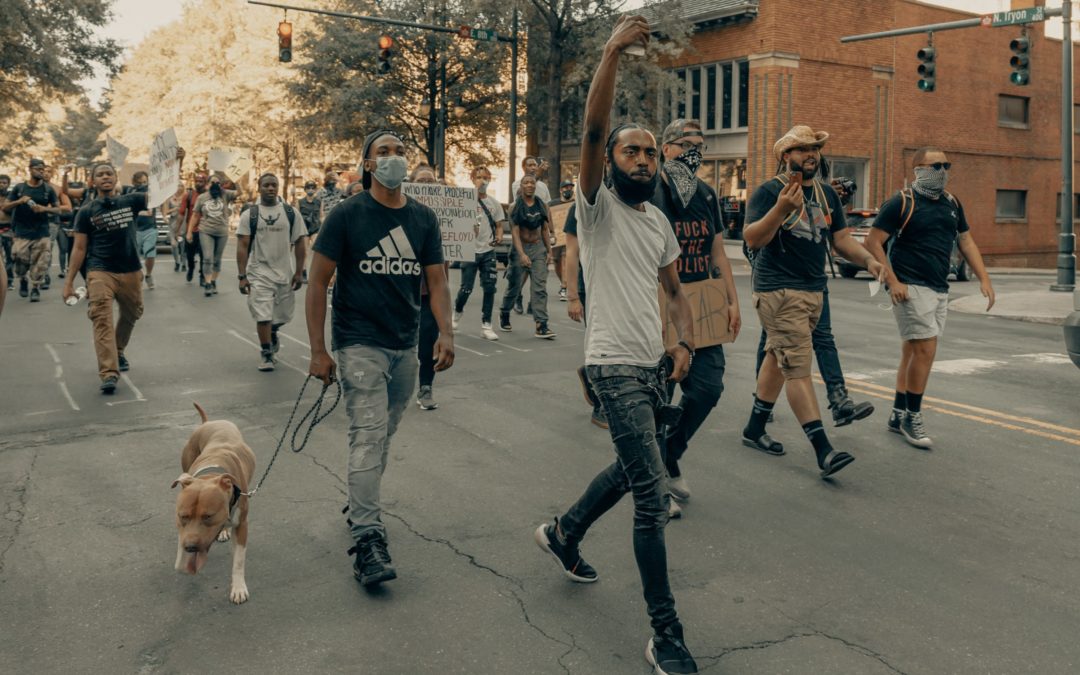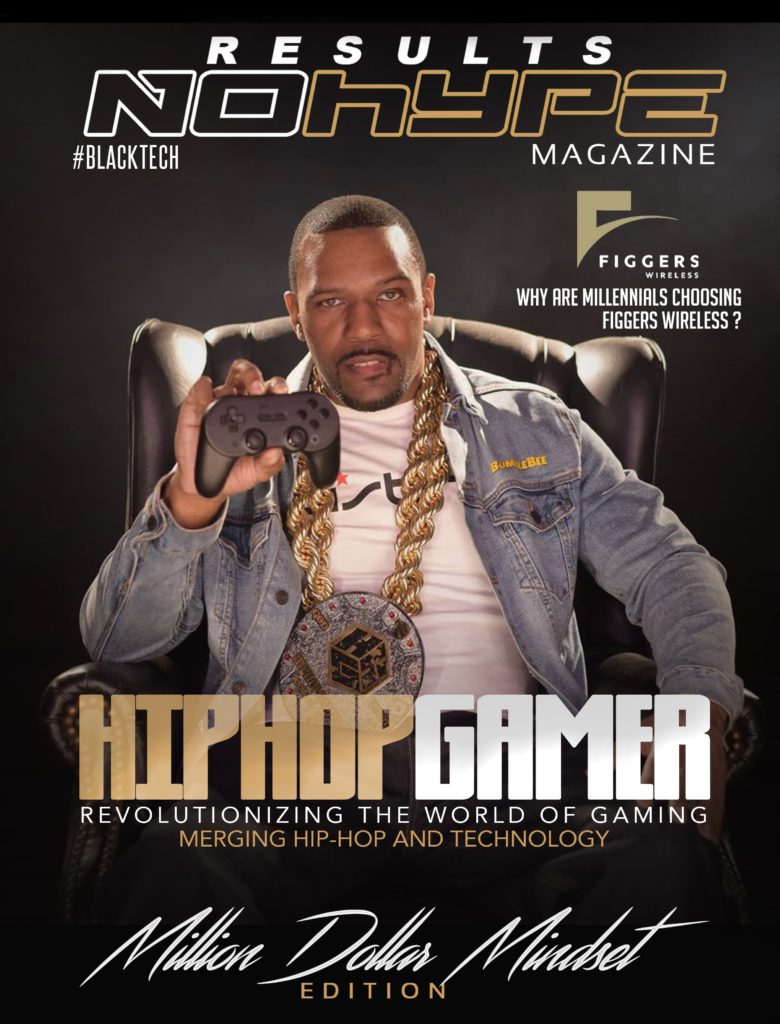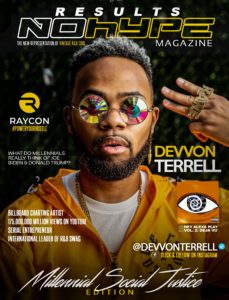
by Jonathan P-Wright | Jun 20, 2024 | Latest, Music News, New Music Alert |
Photo by Daniel Seßler on Unsplash
Creating a Legacy is a sacred assignment in life.
Crafting a legacy becomes more significant and intentional as the sands of time slip away. Reflecting on your past while charting your legacy is a profoundly surreal journey. Time relentlessly marches forward, never back, and moments once passed cannot be reclaimed. Recognizing the significance and value of your purpose in life shapes the direction of your destiny.
Believing in yourself during life’s most perilous, uncertain, and darkest periods fortifies you with resilience. Faith is forged in the crucible of fire and desperation.
Walking by faith is a path seldom chosen by ordinary individuals. The light of leadership illuminates a divine route reserved for exceptional beings. These exceptional beings comprehend the profound language of sacrifice, discipline, and humanity.
DaCyfer is a natural-born pioneer.
Entrepreneur and Recording Artist DaCyfer stands as one of the most influential voices in Millennial music culture. For over ten years, DaCyfer has crafted and shared soul-stirring audio works that have expanded the creative boundaries of Hip-Hop. As a highly skilled music producer and engineer, DaCyfer’s connection to music is deeply spiritual, psychological, and personal.
Entrepreneur and recording artist DaCyfer’s body of work features a unique fusion of soul, unbridled energy, passionate vocals, and exquisite musical arrangements. His extraordinary skill in blending emotions and aspirations into his music sets him apart.
As we reach the mid-point of 2024, DaCyfer is broadening his multimedia enterprise by incorporating various interactive segments, such as global merchandising and a record label. This expansion will see his corporate headquarters operating both nationally and globally.
Stretching from Germany to Los Angeles, DaCyfer’s brand presence is felt everywhere. His future legacy is solidifying, ensuring that his name will resonate across all seven continents.

by Laghe Andrews | May 17, 2024 | Uncategorized |
Photo by Aditya Chinchure on Unsplash
After a hiatus spanning three years, the inimitable Chief Keef has resurfaced with his latest musical offering, “Almighty So 2.” This album marks a triumphant return for the 28-year-old rapper, who has etched an indelible mark on the hip-hop landscape with his groundbreaking artistry and unparalleled influence.
Revisiting the Roots of a Rap Phenomenon
To truly comprehend the magnitude of Chief Keef’s impact, one must delve into the origins of his meteoric rise. It was in 2012 when the Chicago native first captured the attention of the music world with his chart-topping hits “I Don’t Like” and “Love Sosa.” These seminal tracks ignited a seismic shift in the rap game, ushering in a new era of raw, uncompromising lyricism and gritty, street-inspired beats.
A Voice for the Unheard
Born Keith Cozart, Chief Keef’s ascent to stardom was a testament to his unwavering authenticity and his ability to give voice to the harsh realities of inner-city life. His music resonated deeply with a generation of youth who found solace and validation in his unapologetic depictions of the struggles and triumphs of the urban experience.
A Humbling Acknowledgment
Chief Keef’s response was as candid as it was humbling. “Everywhere!” he exclaimed, highlighting the ubiquity of his influence. “If I had 500 M’s every time [I heard that], I’d be Jeff Bezos. The fuck? I think I’d probably be bigger. I would be more rich!”
A Weariness with Constant Praise
While the recognition of his impact is undoubtedly flattering, Chief Keef’s tone betrayed a weariness with the constant praise. “I be hearing that a lot, though, man. I be tired of hearing that shit. I be like, ‘We know.’ Me, you, and God know that. It’s okay. Let people do what they do, man.”
Despite his nonchalant attitude towards the accolades, Chief Keef’s humility shines through as he acknowledges the influential forces that shaped his own artistic journey.
Reverence for Hip-Hop Legends
“I was a big fan of Gucci [Mane] and Lil Wayne. Still am,” he confessed, paying homage to the rap titans who paved the way for his success. “So if I got people who love me like that, shit, man.”
Chief Keef’s admiration for these trailblazers extends beyond mere fandom. He revealed that he still draws inspiration from their iconic styles, seamlessly weaving their influences into his own unique sound. “And we still even sometimes take our raps [from that],” he shared. “The old Lil Wayne, I still even rap like that. If you listen to ‘Jesus,’ I got his flow—some Lil Wayne, the old Wayne, inspiration. So I guess I inspire, the way they inspire me.”
In a poignant moment during the interview, Setaro broached the topic of Chief Keef’s upcoming performance at the Lyrical Lemonade Summer Smash, which will mark his first live show in Chicago in over a decade.
Section 5: The Enduring Legacy of a Hip-Hop Visionary
As Chief Keef prepares to take the stage in his hometown, his influence continues to reverberate throughout the hip-hop community and beyond.
A Trailblazer’s Impact
From his humble beginnings on the streets of Chicago to his meteoric rise to stardom, Chief Keef’s journey has been a testament to the power of authenticity and unwavering artistic vision. His music has resonated with generations of listeners, providing a raw and unfiltered lens into the harsh realities of urban life.
A Cultural Phenomenon
More than just a musician, Chief Keef has become a cultural phenomenon, his influence permeating fashion, language, and popular culture. His impact is a testament to the enduring power of art to transcend boundaries and unite people from all walks of life.
As Chief Keef continues to evolve and push the boundaries of his artistry, his influence remains a constant force in the ever-changing landscape of hip-hop.
Embracing Growth and Transformation
Like any true artist, Chief Keef’s journey has been marked by growth and transformation. His music has evolved from the raw, unfiltered energy of his early days to a more refined and nuanced sound, reflecting the maturity and depth of his artistic vision.
Staying True to His Roots
Yet, despite his evolution, Chief Keef has remained steadfastly committed to his roots. His music continues to resonate with the same authenticity and raw emotion that first captivated audiences over a decade ago.
A Lasting Impact on Hip-Hop
As Chief Keef’s career continues to unfold, his impact on the hip-hop genre is undeniable. His influence has transcended generations, inspiring countless artists and shaping the very fabric of the music we love. Whether you’re a die-hard fan or a casual listener, Chief Keef’s legacy is one that will resonate for years to come.
To truly appreciate the depth of Chief Keef’s influence, it’s essential to delve into the intricacies of his artistic journey, from his humble beginnings to his current status as a hip-hop icon.
Born and raised in the heart of Chicago’s Southside, Chief Keef’s formative years were shaped by the harsh realities of inner-city life. His music became a powerful outlet, allowing him to give voice to the struggles and triumphs of his community.
Chief Keef’s Legacy and Influence on Future Generations
As Chief Keef continues to evolve and push the boundaries of his artistry, his legacy and influence on future generations of artists and listeners cannot be overstated.
Through his willingness to take risks and push boundaries, Chief Keef has inspired countless artists to embrace their own creative visions, regardless of the challenges or criticism they may face.
Leaving an Indelible Mark
Whether through his music, his fashion, or his cultural impact, Chief Keef has left an indelible mark on the world of hip-hop and beyond. His influence will continue to reverberate for generations to come, inspiring and shaping the art of tomorrow.
As Chief Keef embarks on this new chapter of his artistic journey, fans and critics alike are eagerly anticipating what’s next for this hip-hop visionary.
Embracing Growth and Evolution
Like any true artist, Chief Keef‘s future will undoubtedly be marked by growth and evolution. His willingness to embrace change and push the boundaries of his craft will continue to shape his artistic trajectory.
Ultimately, Chief Keef’s future will be a testament to his enduring legacy as a trailblazer and visionary. Through his unwavering commitment to his art and his truth, he will continue to cement his place in the annals of hip-hop history, inspiring generations to come.

by Jonathan P-Wright | Dec 22, 2023 | Latest, Music News |
The music industry mourns the demise of a legendary figure, Joseph ‘Amp’ Fiddler, whose influence and contributions have left a significant imprint on the world of funk and soul music. Aged 65, the Detroit Funk superstar, as he was fondly referred to, succumbed to a long battle with cancer.
The Announcement of His Passing
In a heartfelt statement released on his Instagram account, his family shared the somber news.
“We face the insurmountable responsibility of sharing the passing of Joseph ‘Amp’ Fiddler, Detroit’s own world-renowned ambassador of funk, soul, and electronic music, keyboardist, producer, Afro-futurist, and guiding force of light for so many. He has transitioned at the age of 65. After an extensive and noble battle with cancer, he now gracefully rests in peace and power.”
The Man Behind the Music
Joseph ‘Amp’ Fiddler wasn’t just a musician; he was a creative force that breathed life into the music scene. His artistic prowess was not limited to performing. He was also a seasoned keyboardist, a visionary producer, and a guiding force for many upcoming artists. His musical style was an eclectic mix of funk, soul, and electronic music, which he used to create a unique sound that resonated with audiences worldwide.
Career Highlights
Fiddler’s career spanned over four decades, during which he worked with many renowned artists such as Maxwell, Brand New Heavies, Raphael Saadiq, Slum Village, Carl Craig, and Moodyman. His involvement with the legendary band Parliament-Funkadelic as a backup keyboardist and vocalist from 1985 to 1996 significantly shaped his musical journey.
In 1990, he teamed up with his brother Bubz to release the album “With Respect”. Later, in 2004, he embarked on his solo career, releasing his debut album “Waltz of a Ghetto Fly”. His sophomore album, “Afro Strut”, followed two years later, with his third album “Inspiration Information” released in 2008.
His Influence on J Dilla
One of the most significant contributions of Fiddler was his mentorship to J Dilla, one of the most influential figures in hip-hop. Fiddler is credited with introducing Dilla to Q-Tip and Clinton in July 1994, a pivotal moment that catapulted Dilla’s career.
Remembering Amp Fiddler
The Instagram announcement further read:
“It would be impossible to encapsulate the gravity of his energy, global impact & contributions. His life’s work, legacy, & most importantly… his love… will far exceed his earthly presence. How blessed are we, to have experienced Amp Fiddler in this lifetime. A beautiful spirit and gift of light.”
The Music Industry Reacts
The news of Fiddler’s passing has sent shockwaves across the music industry, with many expressing their sorrow and sharing their memories of the Detroit Funk legend.
GoFundMe for Funeral Costs
A GoFundMe has been set up to cover the funeral costs. At the time of this writing, the donations have surpassed the initial target of $9,000, reflecting the enormous love and respect people have for Amp Fiddler.
Conclusion
As we remember Joseph ‘Amp’ Fiddler, his music continues to live on, embodying the spirit of Detroit Funk and his passion for music. His influence on the music industry will forever be remembered, and his legacy will continue to inspire future generations of musicians. Rest in peace, Amp Fiddler. You’ll always be our beloved ambassador of Detroit Funk.

by Fabiola Noel | Oct 25, 2023 | Latest, Music News |
Photo by Nainoa Shizuru on Unsplash
Hype Williams, a prodigious music video director, is a name that reverberates throughout the music world. His groundbreaking vision has shaped the music videos of some of the most influential artists in the industry, such as Jay-Z, Missy Elliott, and DJ Khaled. This article delves into the stories behind Williams’ impactful work, exploring the collaborative efforts and creative processes that have marked his legendary career.
The Team Behind the Vision
The indelible visuals that Williams has been known for over the past three decades were not the work of a single individual. Williams, despite his grandiose ideas and pioneering vision, required a team to transform his concepts into reality. His collaborative endeavors involved working closely with various creatives, including June Ambrose, an imaginative costume designer, Malik Hassan Sayeed, a talented cinematographer, and Connie Orlando, a dedicated producer, among others.
Artists such as Jay-Z, Missy Elliott, Kelis, and DJ Khaled, placed their trust in Williams, faithfully following his direction. This collaborative approach was critical in producing 2-3 music videos a month at the peak of Williams’ career.
Jay-Z: From “Can’t Knock The Hustle” to “Big Pimpin”
Jay-Z’s collaboration with Williams began in 1996 with the music video “Can’t Knock The Hustle”. The video’s cinematic feel was amplified by the stunning cinematography of Malik Hassan Sayeed. The grandeur of the visuals and Williams’ unique eye for detail elevated the video to a whole new level.
The duo’s groundbreaking collaboration continued with “Sunshine” in 1997, and “Big Pimpin” in 2000. “Big Pimpin” marked their first high-budget video. Williams’ direction and vision for the video were instrumental in pushing the album sales from one million to four million.
Missy Elliot: The Magic of “The Rain” and “She’s a Bitch”
Williams’ collaboration with Missy Elliot led to the creation of visually stunning music videos like “The Rain” and “She’s a Bitch”. Williams’ innovative ideas, coupled with Elliot’s risk-taking attitude, resulted in captivating and futuristic music videos.
For “She’s a Bitch”, Williams suggested the bold idea of Elliot sporting a bald head. This idea, along with Elliot’s futuristic wardrobe and make-up, made the video a masterpiece. These visuals have become iconic in the music industry, proving to be a work of art set to inspire future generations.
The Costuming Genius of June Ambrose
June Ambrose, the costume designer behind some of Williams’ most iconic videos, played a crucial role in bringing his visions to life. Ambrose designed the costumes for videos such as “Mo Money Mo Problems” and “The Rain”. Her ability to create custom, out-of-the-box costumes on short notice was instrumental in setting the tone and visual impact of these videos.
Fatima Robinson: Choreographing the Moves
Fatima Robinson, the choreographer for videos like “Rock The Boat” and “Put Your Hands Where My Eyes Can See“, was instrumental in bringing Williams’ vision to life. Her choreography, combined with Williams’ innovative direction, resulted in music videos unlike any seen before.
Margo Wainwright: Making Iconic Videos a Reality
Margo Wainwright, the former video commissioner at Def Jam, worked closely with Williams to produce iconic videos for Def Jam artists. Despite the astronomical budgets associated with Williams’ videos, the results were always worth the investment. Videos such as “Big Pimpin” and “Hate Me Now” were game-changers in the music industry, becoming iconic symbols of the culture.
Hype’s Legacy: Beyond Music News
The impact of Williams’ work extends beyond music news and the music industry. His innovative direction and groundbreaking vision have inspired countless artists and filmmakers. His contribution to the representation of Black culture in media is unparalleled. His work has set the bar high for music video directors, challenging them to think outside the box and push the boundaries of creativity.
Williams’ legacy continues to inspire new generations of artists, filmmakers, and music video directors. He has paved the way for creative expression in the music industry, proving that with a bold vision and a talented team, anything is possible. So, here’s to Hype Williams, the man who showed the world what Black opulence looks like and continues to shape the visual landscape of the music industry.

by Jonathan P-Wright | Jul 27, 2023 | Latest, Social Justice |
Photo by Clay Banks on Unsplash
The US Education Department has launched an investigation into Harvard University’s legacy admissions practices following allegations of discrimination. The inquiry was prompted by a complaint filed by a civil rights group, raising concerns about fairness and equity in the admissions process at the prestigious Ivy League institution.
Legacy admissions refer to the practice of giving preferential treatment to the children of alumni during the college admissions process. While legacy preferences have been a longstanding tradition at many universities, they have also faced criticism for perpetuating privilege and reinforcing inequities in higher education.
Harvard University, like other institutions, has faced scrutiny over its legacy admissions policies in recent years. The civil rights group’s complaint brought attention to the potential discrimination against applicants from underrepresented and marginalized backgrounds, who may face barriers in gaining admission compared to legacy applicants.
The US Education Department’s investigation aims to determine whether Harvard’s legacy admissions practices comply with federal laws and uphold principles of equal opportunity. The examination comes in the wake of a recent ruling by the nation’s highest court, which has implications for affirmative action and diversity in college admissions.
In response to the investigation, Harvard University has taken proactive steps to review its admission policies. A spokesperson for the institution emphasized their commitment to fostering an inclusive and diverse student body, and ensuring that doors to opportunity remain open to students from all walks of life.
The scrutiny over legacy admissions reflects broader debates about access and fairness in higher education. Advocates for reform argue that such preferences can perpetuate intergenerational privilege and limit opportunities for students who do not come from legacy backgrounds.
As the investigation unfolds, the nation will closely monitor the US Education Department’s findings and potential recommendations. The outcome of this inquiry could have far-reaching implications for college admissions practices across the country, influencing how universities approach legacy preferences and their efforts to promote diversity and inclusion.
Harvard’s legacy admissions investigation is part of a larger national conversation about the role of universities in addressing structural inequalities in education. Calls for reform and greater transparency in admissions processes have amplified in recent years, urging institutions to adopt more equitable practices that promote access to higher education for all.
While the investigation focuses on Harvard’s specific practices, its outcome may serve as a catalyst for broader discussions about affirmative action, legacy preferences, and the pursuit of a more just and inclusive higher education system in the United States. The Education Department’s efforts to ensure fair admissions practices align with the nation’s ongoing commitment to fostering equal opportunities for all students, regardless of their background or familial connections.
As the inquiry progresses, it will be essential to strike a delicate balance between honoring institutional traditions and embracing progressive reforms that advance social justice in academia. The future of legacy admissions at Harvard and beyond hinges on finding common ground between tradition and transformation in the pursuit of educational excellence and inclusivity.








RECENT COMMENTS